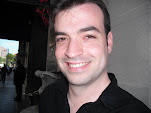The Age of Wonder: How the Romantic Generation Discovered the Beauty and Terror of Science by Richard Holmes (Pantheon 2009)
June 24th 1833 was the date when the word 'scientist' was arguably coined. At a meeting for the British Association for the Advancement of Science, William Whewell was addressing the packed Senate House on the nature of science when the applause died down one sole figure remained standing, and to the surprise of everyone present, it was that of the Romantic poet Samuel Taylor Coleridge. He remarked of the members present in the room that the name they used for their profession was no longer appropriate, men knee deep in mud searching for fossils being called 'natural philosophers' didn't quite seem right and the other moniker 'men of science' hardly included the likes of Caroline Herschel; something better had to be devised. As an actual metaphysician himself Coleridge wanted a name that would more reflect the practical and hands-on nature of their work. Whewell's suggestion was that one could by analogy of art to artist go from science to scientist and thus the word was born.
This book deals with how we progressed from the pure philosophy of the inductive reasoning of Bacon and Newton and the rationalism and foundationalism of Descartes, through the independently wealthy and crown sponsored men of Royal Society to the more familiar profession of science of Whewhell, Charles Darwin and beyond. At the heart of this book are biographies of three of the guiding lights of Romantic science. The first is of Sir Joseph Banks whose botanical voyages in Tahiti with Captain Cook opened his eyes to a world of experience and adventure which, when he himself was crippled by gout and unable to travel, encouraged in others as the President of the Royal Society. The second is William Herschell and his redoubtable sister Caroline who brought skill, ingenuity and a complete thoroughness to the science of astrology through regular nightly sweeps of the sky and better telescopic technology that helped them discover Uranus and two of its moons as well as two moons of Saturn and a catalogue of over 500 new nebulae. Finally we meet Sir Humphry Davy and his experiments with gases and electricity that made him a veritable rock star.
Part of what makes this period so exciting is that the arts and sciences had an almost symbiotic existence. Erasmus Darwin and Humpry Davy both composed poetry whilst the likes of Coleridge, Wordsworth and Shelly wrote pamphlets on science and natural philosophy. It was a synthesis that was mutually beneficial which makes me think that Stephen Hawking was all the more wrong when in his most recent book 'The Grand Design' he made the pronouncement that 'philosophy is dead' a somewhat ironically self-defeating philosophical stance.
It was an exciting period in history, the exploration of Africa and the islands of the South Pacific. The advent of flight with the early experiments in Ballooning. There was also an exciting cast, not just the poets and triumvirate of scientists mentioned above but the likes of Michael Faraday, Thomas Beddoes, Mungo Park and the rest. Holmes infuses the narrative with his own sense of wonder and as the book ends with Charles Darwin heading off on the HMS Beagle he leaves us wanting to know what comes next.
5/5
Laura McCluskey: The Wolf Tree
3 months ago



0 comments:
Post a Comment